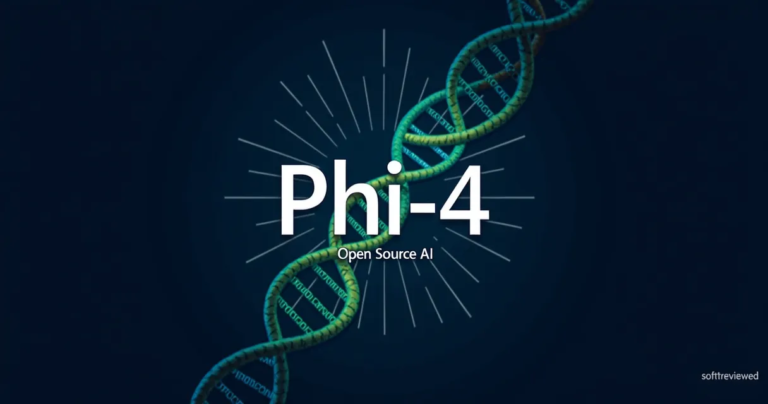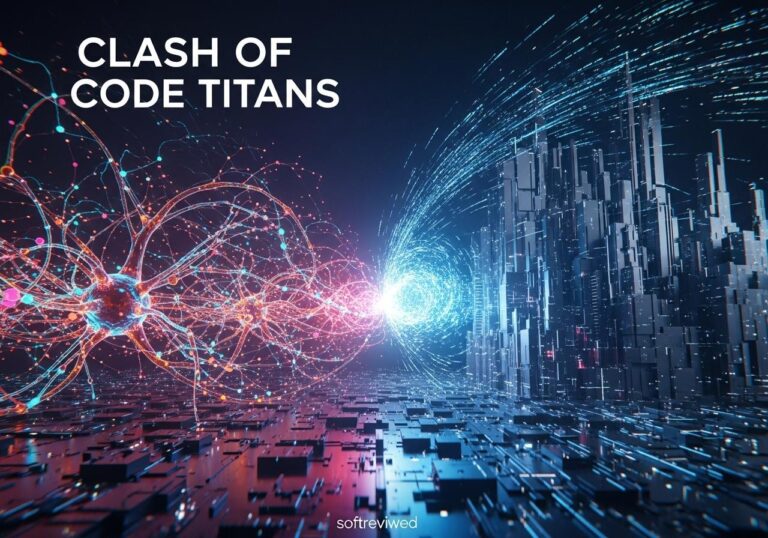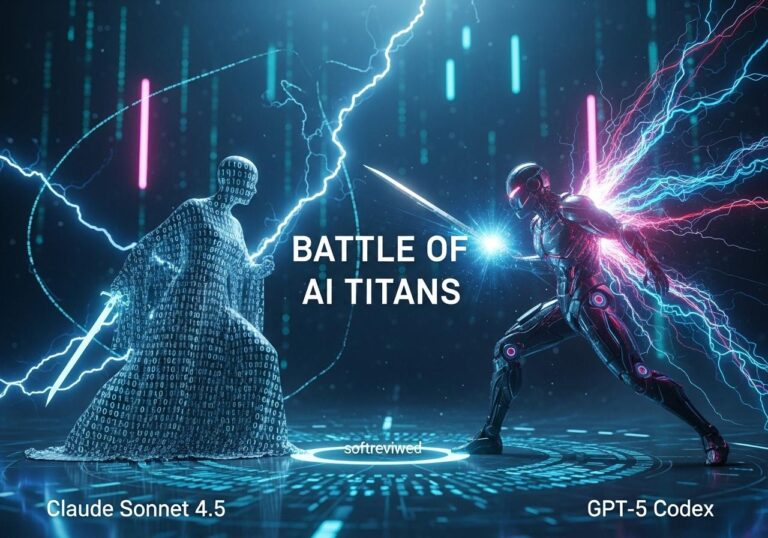🧮 Microsoft’s Phi-4 Model: Small but Mighty
A breakthrough in efficient AI: How a smaller model achieves bigger results
💪 Small yet Powerful
Phi-4 is a 14B parameter small language model that outperforms larger models in math reasoning.
🔄 Synthetic Data Breakthrough
Phi-4 was trained mainly on synthetic data, showing the potential of this approach for boosting small models’ reasoning skills.
📊 High-Performance Benchmarks
Phi-4 scored 91.8 points on recent American Mathematics Competition (AMC) problems, surpassing Google’s Gemini Pro 1.5 (89.8 points).
⚡ Efficiency and Accessibility
Phi-4 demonstrates that smaller, smarter models can achieve high-quality performance while using fewer resources.
⚠️ Limitations and Challenges
Phi-4 can fabricate plausible but incorrect information and struggles with strict instruction adherence and certain reasoning tasks.
🌐 Availability
Phi-4 is currently available on Azure AI Foundry under a Microsoft Research License Agreement (MSRLA) and will be available on Hugging Face.
The world of Artificial Intelligence (AI) is constantly evolving, and Microsoft's recent move to make its Phi-4 small language model (SLM) fully open source marks a significant step towards democratizing access to advanced AI technology. This decision allows developers and researchers to freely explore, use, and build upon the capabilities of this highly efficient model, previously accessible only through the Azure Foundry. This move signals a commitment to fostering collaboration and accelerating innovation in the AI community. Let's explore what makes Phi-4 special and why its open-source release is such a big deal.
Phi-4 Unveiled: A Small Model With Mighty Capabilities
Phi-4 isn't your typical large language model (LLM). 💡 It's a 14-billion-parameter model specifically engineered for complex reasoning, particularly in areas like mathematics and logic, while maintaining strong performance in language processing. It’s part of Microsoft's Phi series, known for its focus on model efficiency and data quality. Think of Phi-4 as a pocket-sized powerhouse, capable of performing tasks typically associated with much larger models. This makes it an attractive choice for applications where resource constraints or speed are a major concern.
A Different Approach to Training: The Power of Synthetic Data
One of the key innovations behind Phi-4 is its training methodology. Unlike many AI models that rely heavily on massive amounts of organic data, Phi-4 leverages high-quality synthetic data generated through innovative techniques like multi-agent prompting, instruction reversal, and self-revision workflows. These approaches enable Phi-4 to achieve superior reasoning and problem-solving skills, significantly improving efficiency in training while also reducing the dependency on real-world data. This method represents a shift in the traditional approach to training AI models, and showcases the effectiveness of creating tailored data for specific training purposes.
Context is Key: What Makes Phi-4 Technically Special?

Diving deeper into the technical aspects, Phi-4 is based on a decoder-only Transformer architecture with an extended context length of 16k tokens, making it adept at handling lengthy inputs. The model was trained on approximately 10 trillion tokens, combining rigorously curated public data with carefully generated synthetic data. This method ensures a strong performance across benchmarks such as MMLU and HumanEval. The selection of a decoder-only approach is a significant choice. Unlike standard Transformer models that consider text before and after a word, decoder-only models only consider the preceding text. This leads to lower inference costs, making Phi-4 more efficient.
Here is a breakdown of the core technical details:
Parameters: 14 billion
Architecture: Dense decoder-only Transformer
Context Length: 16K tokens
Training Data: 9.8T tokens, blend of synthetic and curated public data
Training Time: 21 days on 1920 H100-80G GPUs
License: MIT
Why Open Source? Benefits for the AI Community
Microsoft's decision to open-source Phi-4 comes with a range of significant benefits for the entire AI community. ✅ By releasing the model under the MIT license, Microsoft is encouraging transparency and widespread collaboration. This allows researchers and developers to:
Contribute to Further Development: Individuals and organizations can refine and improve the model's performance based on their unique needs.
Accelerate Innovation: Free access to a powerful and efficient model enables the community to explore novel applications and conduct research without access barriers.
Promote Education: The open availability of Phi-4 provides students and educators with essential resources to learn more about the intricacies of AI and NLP technology.
Real-World Applications: Where Phi-4 Shines
The potential applications of Phi-4 are diverse and far-reaching, owing to its combination of reasoning prowess and computational efficiency. Some of the most notable uses include:
STEM Education: Phi-4's strength in mathematics makes it an ideal tool for developing educational applications like intelligent tutoring systems. 🧑🏫
Resource-Constrained Environments: Its efficiency allows deployment on devices with limited memory and computational resources, such as mobile devices.
Rapid Prototyping: Developers can use Phi-4 to quickly prototype AI-powered features, including chat interfaces, question-answering systems, and code generation tools.
- Complex Reasoning: Phi-4's architecture supports complex reasoning tasks, making it well-suited for scenarios requiring logic-based analysis and problem solving.
Performance Prowess: How Does Phi-4 Compare?
Phi-4's performance has been quite remarkable for a model of its size. 🏆 It has demonstrated the ability to outperform not just other similarly sized models, but even larger models in areas like complex math problems. In fact, in some internal evaluations, it was shown to rival or surpass models like Llama 3.3 70B on specific benchmarks. Here's a look at some key performance comparisons:
| Benchmark | Phi-4 Score | Competitor Score |
|---|---|---|
| American Mathematics Competition (AMC) | 91.8 | Gemini Pro 1.5 (lower), Claude 3.5 Sonnet (lower) |
| MMLU | 84.8 | Llama 3.3 70B (lower) |
| GPQA | Higher | Llama 3.3 70B (lower) |
Note: Competitor scores vary based on sources and model versions.
These results are particularly impressive given the model's relatively small size, suggesting that Phi-4 represents a significant step forward in the size-to-performance ratio of AI models.
What's Next? The Future of Phi-4
With its release on Hugging Face, Phi-4 is already gaining significant traction within the AI community. The open-source nature of the model means that its development isn't limited to Microsoft; instead, a global community of developers, researchers, and enthusiasts can contribute to its evolution. This collaborative approach is likely to result in further refinements and novel applications of Phi-4 in the near future. 🚀 The open-source model can be found on Hugging Face here to help you explore its capabilities.
https://huggingface.co/microsoft/phi-4
How Does Microsoft’s Open Source Language Model Compare to OpenAI Codex in Terms of Capabilities and Applications?
When comparing Microsoft’s Open Source Language Model to OpenAI Codex, it’s essential to consider their capabilities and applications. Microsoft’s model excels in integration and customization, while Codex offers superior natural language understanding. Exploring openai codex features and challenges reveals a nuanced landscape, highlighting strengths and potential limitations in real-world use cases.
The Takeaway: A New Era of Collaborative AI
The open-sourcing of Phi-4 isn't just about making a capable language model accessible; it represents a commitment to transparency, collaboration, and innovation in AI. This approach is intended to foster a more inclusive and diverse AI ecosystem, allowing anyone to leverage the power of this small but mighty model. By making this technology available to everyone, Microsoft is empowering the AI community to push the boundaries of what's possible. 👉➡️ Phi-4's release will likely inspire a range of new advancements in AI research and application.
Model Performance Comparison: Phi-4 vs Larger Models
Comparison of model performance across different benchmarks, showing Phi-4’s superior performance despite smaller parameter count.







